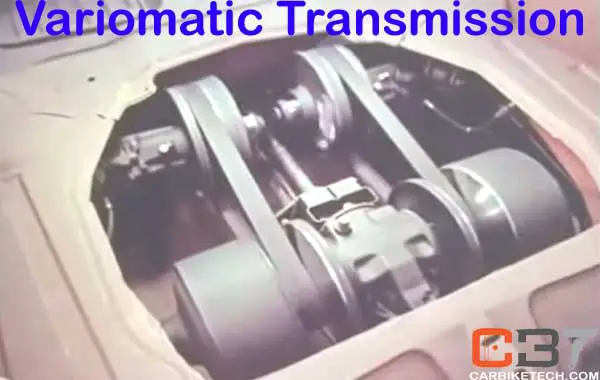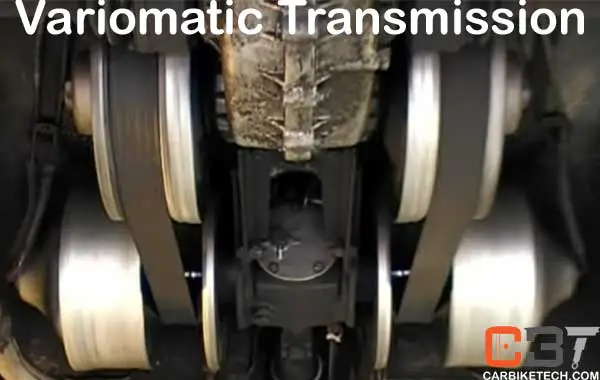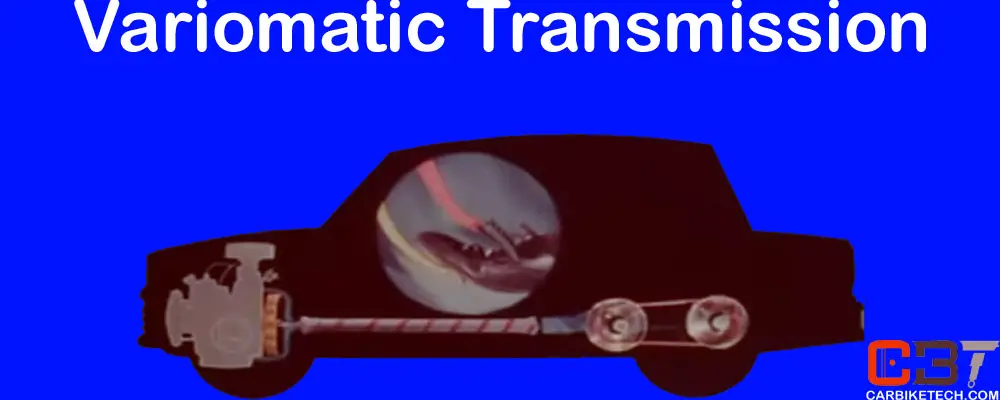What Is Variomatic Transmission?
Variomatic transmission is a type of stepless and fully automatic transmission manufactured by a Dutch car company DAF. Initially, one Hub van Doorne designed & developed this technology. It is an uncommon type of automatic transmission. It features an entirely stepless gear-changing mechanism. For example, if the belt is in sequence near the center of the forward pulley and the outer surface of the rear pulley, the car is in a low gear. Vice–versa is also possible, And then the vehicle is in a higher gear.
Variomatic transmission was the first commercially successful continuously variable transmission (CVT). It was in contrast to shifting between different gears. Technically, it constantly produces the best torque. As aforementioned, DAF brought in the variomatic technology in 1958. It also brought an automatic gearbox to the Netherlands for the first time. They first introduced it on the DAF 600.
Design:
It consists of a “V” shaped drive belt and two pulleys, each with two cones. It has an effective diameter that can be changed so that the “V” belt runs closer to the spindle or the rim. However, this depends on the distance between the cones. These cones are synchronized. So, the belt always stays at the same optimal tension.

Furthermore, the engine runs at its best fuel economic speed most of the time. Therefore, the fuel consumption of the DAF 600 car was at an acceptable level. However, the efficiency of any mechanical CVT has changed from about 70 to 75% today. Later, Bosch improved its performance.
The Variomatic transmission system does not have different gears but one gear. It continuously shifts and has a separate reverse mode (an equivalent of reverse gear). The variomatic gearbox works well in reverse as well. Thus, it gives an outcome that one can drive back as fast as forwards.
Therefore, the event organizers had to place DAF cars in a different groups. No other car could keep up in the earlier Dutch Annual Backward Driving World Championship. Thus, these very cheap and simple cars got the “Formula One” title in this competition.
Multitronic Transmission:
Furthermore, manual transmission remains the leading technology in Europe. When Volvo acquired DAF in 1974, they transferred Variomatic patents to a company named VDT (Van Doorne Transmissie). VDT continued the development of the CVT. Later it introduced a push-belt system in the Ford Fiesta and Fiat Uno.
Audi recreated an improved version of the variomatic transmission in 2000 under the name Multitronic. This system uses a metal belt. As a result, it has an effectively unlimited number of gears. Thus, shifting between them without noticeable jerks. These metal drive belts are the most critical part of CVT. Over 40 car models use them. Even expensive brands such as Mercedes-Benz use these belts.
Operation of Variomatic Transmission:
Gear Ratio:
The final drive consists of two pulleys with moveable conical drums in variomatic transmission. The engine vacuum in the inlet manifold and engine speed control the distance between the drums through centrifugal weights inside the drums. A drive belt runs between the two pulleys. Because of the variation in the span of conical drums in both pulleys, the diameters and the reduction ratio changes continuously.
Differential Mechanism:
The DAF 600 – 55 propelled each rear wheel individually. It did so with a pair of conical drums and drive-belt, with the help of a limited-slip differential. As a result, if a drive wheel on a slippery road spins faster, the other wheel can still transfer the total torque. Thus, it results in a good grip. Therefore, this was also a reason for the success of the DAF cars in rallies.
However, several drawbacks come with the absence of a correct differential gear in variomatic transmission. Firstly, each belt could settle into its optimum position (independent of the other). Thus, it allows for wheel speed variation. However, the system is slow to operate and dependent mainly on the tuning of the pulley. Therefore, it leads to rapid tire wear and stresses other transmission components. Besides, broken drive shafts are common. Finally, low-speed handling in icy conditions is tricky as the system tends to drive the car forward against the effect of the steered wheels.
Later manufacturers fitted the 46 & 66 cars and Volvo variants with a differentially geared axle. A version with a differential was developed by Williams in the 1993 Formula One car. However, it was banned even before the race. In testing, there were problems with heat dissipation.
Variomatic Transmission In Motorscooters:
Today’s motor-scooters also use variomatic transmission. It has been a standard on all common scooters since 1985. Besides, several companies such as Malossi, Polini, Doppler, and Stage6 offer tuned clutches and variomatic for most common scooters.

Watch Yamaha Ultramatic Transmission In Action Here:
Steel Link Belts:
The modern variomatic transmission works according to the same principle of split pulleys allowing infinitely variable gear ratios. However, the manufacturers made the current transmission more durable than the pulled rubber drive belts. So now they use steel link belts pushed by their pulleys.

Fiat, Ford, and Van Doorne established this improvement in the Netherlands in the late 1970s. Besides, this transmission is also under electronic control. Transmatic is the version that incorporates the switch from rubber to steel belts.
Application:
DAF’s Van Doorne’s Transmissie is still operating in Tilburg, Netherlands. However, it changed association from the DAF group to Bosch in 1995. As a result, brands such as Audi, Honda, BMW Mini, and Subaru offer variomatic transmissions in their cars. Tata Motors also used a variant of this transmission in its Nano. Besides, the Nissan Primera also offers this transmission. In addition, manufacturers use custom names to make their products stand out. E.g., Honda uses Variable Matic, while Yamaha uses UltraMatic transmission. Subaru uses the term Lineartronic for its transmission.
